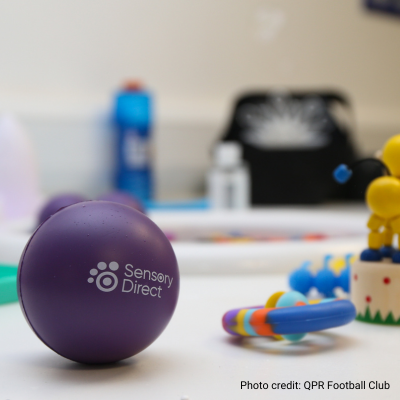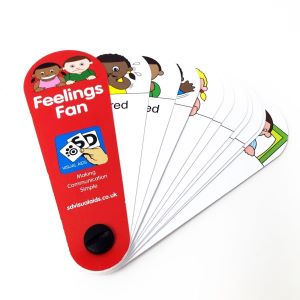Get exclusive deals you won't find anywhere else straight to your inbox.

Creating A Sensory Friendly Venue
Creating a sensory-friendly venue or space is essential for inclusivity.
It involves making changes to the environment to accommodate individuals who may have sensory sensitivities or sensory processing disorders.
Creating a sensory-friendly venue or space may seem like a daunting task, but we’ve put together some points to consider when making your venue sensory friendly.
Space
Identify a room or space that can be a designated sensory room or ‘relaxed environment’ for guests with sensory sensitivities.
This doesn’t have to be a permanent space, as carefully selecting pop-up or removable resources means the contents can be stored away when not in use.
Perhaps you have a meeting room or communal area that could be used?
Lighting
It’s important to avoid harsh or flickering lights. This can be very unpleasant and creates a harsher environment.
Always use dimmable or natural lighting options, combined with quality sensory mood lights.
LED Bubble Tubes are great for sensory rooms. The gentle flow of the bubbles coupled with colour-changing lights creates a calm and stimulating environment.
For larger spaces try Bubble Walls for all the same effects but with added touch stimulation for additional sensory feedback. They also make a great feature for larger walls.
Smaller, handheld Sensory Mood Lights are a more cost-effective and portable solution for space limited areas.
Sound
There can be a lot of unfamiliar, loud and uncomfortable noises during match days.
Reduce background noise levels as much as possible and minimise sudden loud noises.
When selecting the appropriate space for the sensory room, pick a quieter area of the venue.
If budget permits, soundproofing the room is another option where location restraints make it difficult to reduce external noise.
Ear Defenders are a great resource for reducing uncomfortable and unfamiliar sounds. Available in 6 colours they are suitable for children (12 months+) to adults.
 Visual Supports
Visual Supports
Use clear signage with easy-to-read fonts and symbols to help individuals navigate the venue.
Effective communication is vital for ensuring the comfort and safety of guests.
Visual Resources and Communication Fans are a great way for children and adults to express their feelings and emotions.
Visual Timetables provide predictability and structure for events and activities.
Seating Options
It’s important to provide a range of seating options to accommodate different sensory needs, including wipeable bean bags, wobble cushions and wobble stools.
Offer wipe-clean lap pads to guests to use whilst seated. The calming weight helps to relax and increase concentration.
Pop up sensory dens can also be used as a seating option, providing a calm, safe and partially enclosed space for more nervous guests.
Team with sensory lights, bubble tubes and cushions for a temporary, portable sensory space.
Sensory-Friendly Resources
Offer sensory-friendly resources within the space that cater to different sensory preferences.
Fidget Toys help keep fidgeting hands occupied, reducing anxiety.
Tactile play zones encourage sensory exploration in a safe environment.
Art stations encourage creativity and an additional focus whilst listening or watching a match.
Education and Awareness
Educate staff, volunteers, and attendees about sensory sensitivities and the importance of creating a sensory-friendly environment.
Train staff members to be understanding and accommodating to individuals with sensory sensitivities.
Raise awareness through signage, brochures and online resources to inform visitors about the venue's efforts to be sensory friendly.
Offer alternative communication options such as visual or written instructions for those who may have difficulty with verbal communication.
Communication Fans are very useful for those who are unable to communicate their feelings and emotions verbally.
Smells
Minimise strong odours or fragrances in the sensory room, reducing the possibility of sensory overload.
Temperature
Maintain a comfortable temperature range within the sensory room. If windows can be opened, ensure they have adequate safety locks to ensure guests cannot fall out.
Consider the impacts any external noise may have on the noise levels within the
room and use fans or air conditioning units if possible.
Remember that each individual's sensory needs can vary. It's important to gather feedback and make adjustments based on the specific requirements and preferences of your target audience.
Consulting with professionals or organisations experienced in sensory-friendly design can also provide valuable insights and guidance.

